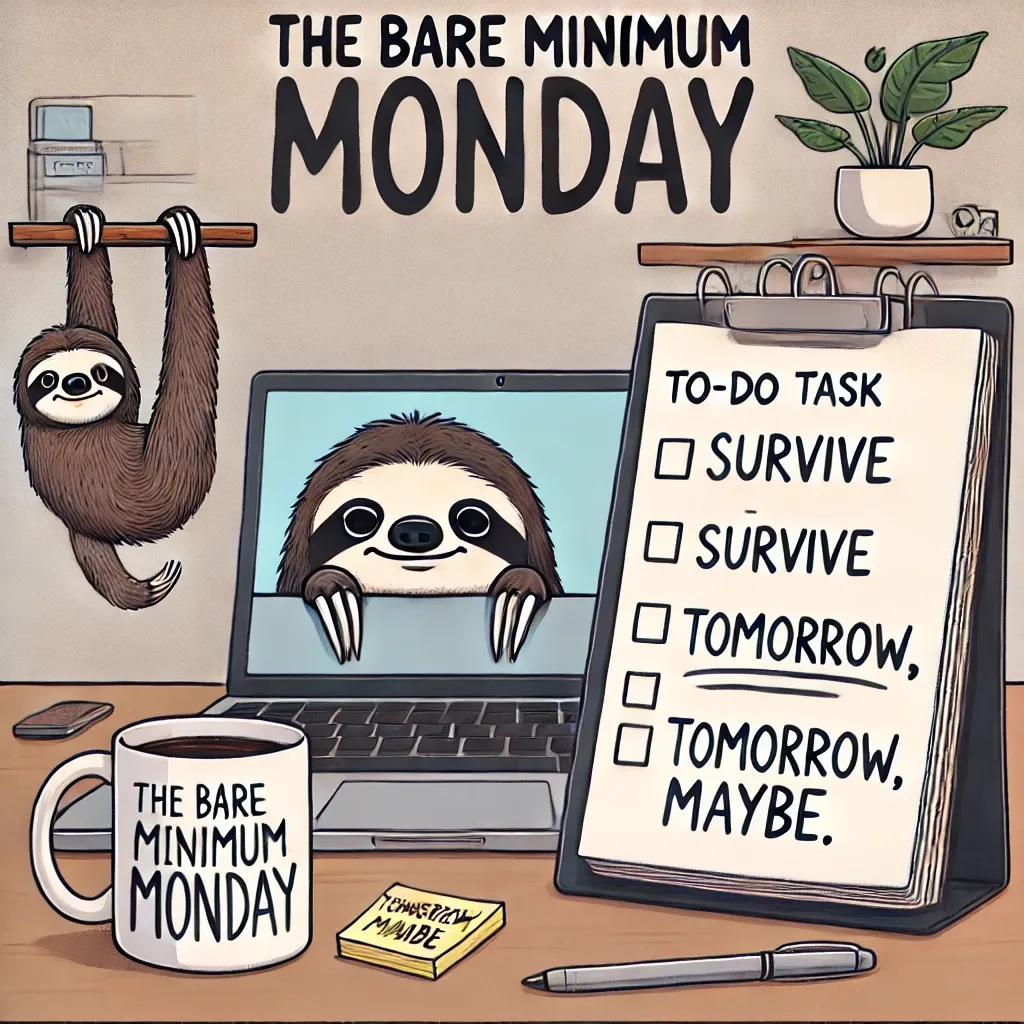Understanding The Bare Minimum Monday In The Workplace
Explore Bare Minimum Monday, a trend transforming workplaces by reducing stress and boosting productivity. Learn its benefits, implementation tips, and how it can enhance employee well-being.

The five-day workweek has always been met with stress and despair for some employees since John Ford was one of the first to count the five-day workweek back in 1914. Giving your all five days a week to an organisation can be daunting, especially when you're up against tight deadlines, back-to-back meetings and keeping up with the hundreds of emails blocking your inbox.
Since Covid brought in the new norm for many employees, things have certainly changed, where the 9to5 grind can be looked upon as archaic, as well as the ways of working in the past. However, many organisations have still kept this working way. Still, employees are starting to push for more, and the Bare Minimum Monday might be a start in this new concept that's becoming more attractive to organisations as a win-win situation and why CEOs and business leaders should take note.
Bare Minimum Monday is a relatively new workplace trend where employees start their week with only the essential tasks. It’s not about slacking off but rather focusing on what's necessary and easing into the workweek. This approach aims to combat the dread and stress often accompanying the traditional Monday blues.
Imagine having a great weekend, but come Sunday evening, the dread sets in and you realize that you are closer to a new week where you're faced with an unbearable workload. Hasn't this method of working had its day? Shouldn't employers look at ways to give their workers a better mindset to start their week?
Some might dismiss this suggestion as another form of mindfulness nonsense, feeling sorry for employees who should just work because they have to and get paid for it. That's true! But who wants a workforce of negative complainers who would rather call in sick on a Monday or stress themselves into doing a bad job when they complete their Monday workday?
If productivity is key to the success of the organisation then employees need to give something back. Let's look at some benefits of this approach.
The Impact on Workplace Productivity
1. Reduced Burnout:
By permitting employees to handle a lighter set of tasks, they can transition into the workweek more smoothly. This approach allows them to acclimatise gradually before the workload increases in the following days.
2. Improved Focus:
By prioritizing essential tasks, employees can effectively manage their workload, resulting in improved outcomes.
3. Enhanced Morale:
A more relaxed beginning to the week can greatly boost employee morale and create a positive work environment.
4. Creative Problem Solving:
Reduced stress can result in clearer thinking and more creative problem-solving.
Implementing Bare Minimum Monday
1. Communicate Clearly:
Make sure your team understands the concept and the reasons behind implementing Bare Minimum Monday. Transparency is key to buy-in.
2. Set Priorities:
Help employees identify what tasks are essential and which ones can wait. This can be done through team meetings or individual check-ins.
3. Encourage Flexibility:
Allow employees to manage their own time and choose how they ease into their workweek. Trust is crucial here.
4. Monitor and Adjust:
Keep an eye on how Bare Minimum Monday is impacting productivity and morale. Be ready to make adjustments based on feedback.
Overcoming Potential Challenges
1. Balancing Act:
It’s essential to balance the ease of Bare Minimum Monday with the need to maintain overall productivity. Setting clear boundaries can help.
2. Consistent Communication:
Regularly communicate with your team to ensure everyone is on the same page and to address any concerns that may arise.
3. Training and Development:
Provide training on time management and prioritization to help employees make the most of Bare Minimum Monday.
Real-World Examples
Several companies have found success by implementing "Bare Minimum Monday" and have reported positive outcomes. For example, some tech firms have noted higher employee satisfaction and retention rates after adopting this approach. By actively addressing mental health issues, these companies have observed an increase in innovation and improved workplace morale.
Final Thoughts
"Bare Minimum Monday is not about doing less; it's about focusing on what matters most. For CEOs and business leaders, embracing this trend could mean the difference between having a burnt-out workforce and a thriving, productive team.
By creating a work environment that prioritizes mental health and well-being, you secure the way for long-term success and innovation. Are you interested in trying out Bare Minimum Monday?
You can start by having a conversation with your team, setting clear priorities, and creating a culture that values the right mindset as much as productivity."





